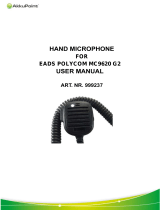
5
Battery Care / Information
Battery
Introduction
Your Entel radio is supplied with a high
performance battery. These batteries:
• Extend talk time
• Reduce the battery’s size and weight
• Do not suffer from ‘memory effect’ that
reduces the life of Ni-Cad and NiMH
batteries
• Have a low toxicity, therefore reducing the
impact on the environment
Battery Pack
• If a battery is not to be used for an
extended period of time (e.g. several months)
remove the battery pack from the equipment
and store in a cool and dry location (around
0°C) part charged.
Do not fully discharge the battery before
storage
• Each charge cycle reduces the battery’s life.
Minimise the number of times you charge
your battery especially in hotter
environments which further shortens a
battery’s life
GMDSS Battery (CLB750x)
The GMDSS batteries (CLB750L \ G \ M
depending on which cells have been used in the
battery pack) are non-rechargeable Lithium
b atteries. The battery is supplied with a security
seal that must be removed before fitting to the
radio. An expiry date is printed on the battery.
Do not use this battery if past the expiry date.
Replacement batteries are available from your
local authorised dealer. If you require assistance
where to purchase please contact Entel for
details.
Under no circumstances must you
attempt to recharge these batteries
Note: only genuine Entel batteries should be used.
Customer satisfaction is assured as you can not
be supplied with sub standard, potentially
dangerous battery packs from 3rd party
manufacturers, ensuring it delivers the expected
capacity and endurance.
On HT series batteries a breathable membrane is
used. This is clearly marked on the battery label.
Piercing the membrane will allow water ingress to
the battery, and will invalidate the warranty.
Battery Pack Precautions
• Switch the transceiver OFF before
charging
• Charge the battery pack before use
• Do not recharge the battery pack if it is
already fully charged.
• Charge the battery in accordance with the
instructions enclosed with your charger
• Do not charge the transceiver and /or
battery pack if they are wet.
The battery pack includes potentially
hazardous components. Please:
• Do Not disassemble or reconstruct
battery
• Do Not short-circuit the battery
• Do Not incinerate or apply heat to the
battery
• Do Not immerse the battery in water
unless attached securely to the radio or
get it wet by other means
• Use only the specified charger and
observe charging requirements
• Do Not pierce the battery with any
object or strike it with an instrument
• Do Not use the battery pack if it is
damaged in any way





















